The Ultimate Spanish Wine & Cheese Pairing Guide
Chow down on fine Spanish wine and cheese, courtesy of James Beard Award-winning author Laura Werlin.

Enter to Win a Trip to Spain’s Most Prestigious Wine Regions. Presented by Ribera y Rueda and DrinkRealSpain.com
Enter to win a trip for two to Ribera y Rueda in 2023 (Click here). Here’s your opportunity to experience the best bodegas (wineries), tour with winemakers and taste their best bottles while taking in historical sites. Stay in luxurious accommodations, partake in late lunches, tapas crawls and fancy dinners.
The grand prize is a round trip for two from an airport in the U.S. to Madrid, ground transportation, five nights lodging, tours and meals while in Spain. Five runner-up prizes will be awarded gifts from DrinkRealSpain.com.
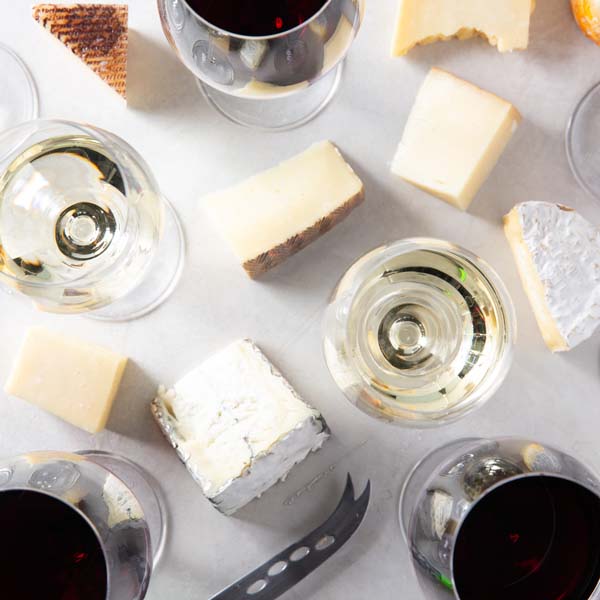
In Ribera del Duero, the native grape called Tempranillo has been evolving in this unique growing region for 1,000 years. Across the valley and over the river, Verdejo, the signature grape of Rueda, thrives as Spain’s number one white wine. Collectively, the two areas are known as Spain’s most prestigious wine regions.
Understanding what makes the wines so special is also key to finding their perfect food pairings. Luckily for wine and food lovers, the winemaking teams in Ribera and Rueda make it easy.
The King Of Entertaining
A sip of a Ribera Tempranillo – the king of grapes in Spain – calls to mind a place where castles dot the land much like the grapevines. These castles represent Spain’s history and an intrinsic power that travels all the way to the glass, which is why the roasted meats of the region – in particular, the baby lamb known as lechazo and the suckling pig called cochinillo – or the ones we make in our own backyards call for this wine.
The connection doesn’t stop there. Gathered around a table, we are doing more than drinking this exceptional wine – we are also taking a taste of history while soaking in the joys of community.
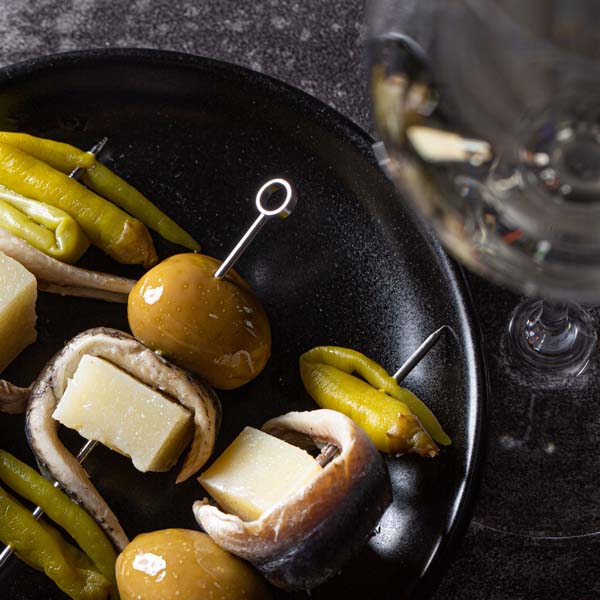
When pairing dishes with Tempranillo, consider richer, heartier foods that are complex and layered complimented by notes of black pepper, rosemary, sage, mushroom, dark chocolate, anise and smoke.
The tasting profile for Tempranillo can be ripe, muscular fruit flavors, structured with lively acidity, dark cherry, blackberry bramble, dried fig, vanilla and cassis. Youthful Tempranillos pair with the widest range of dishes like boldly seasoned fish, roasted birds, lightly smoked and charred proteins.
As the wines take on bottle and oak aging, they develop complexity whereas medium tannins become more elegant, and forest, damp earth, baking spices and leather characteristics become more prominent. The aged wines can handle heat-induced meat sugars, crusted with herbs, umami rich sauces perfect for pairing with compelling dishes layered with flavors and unctuous textures.
Wedges of Manchego, roasted Marcona almonds, thin slices of Ibérico ham, and maybe some dried figs from your local specialty food shop can be a great start or end to any occasion. The bottom line is that Ribera Tempranillo loves most foods and vice-versa. For this reason, it is an ideal pairing wine.
The Cool Cat
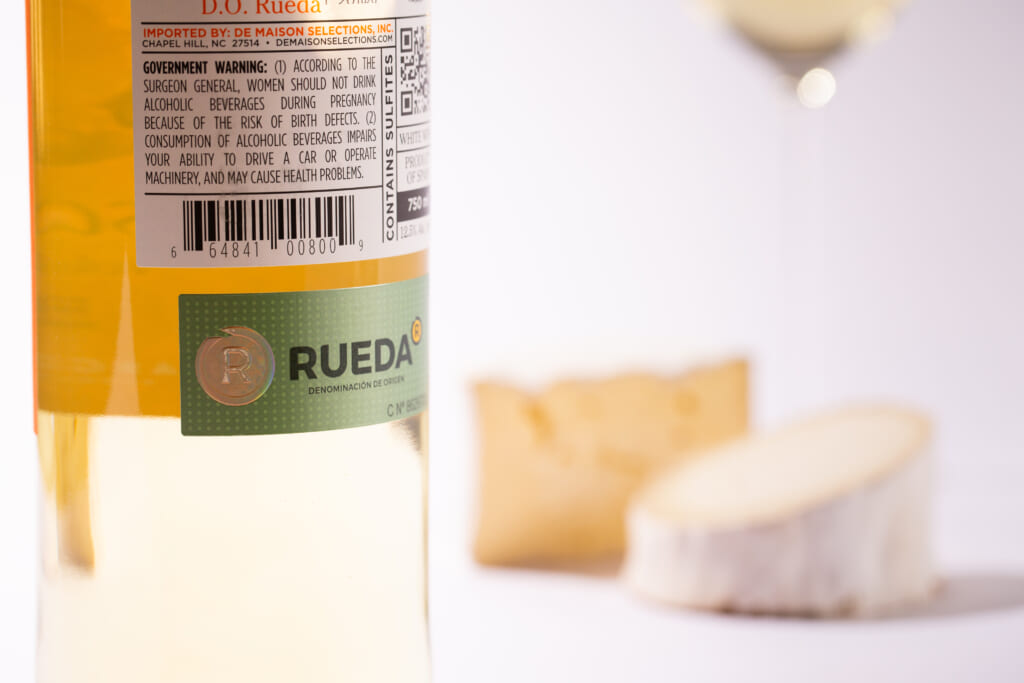
Sometimes called the lioness of grapes for its understated power and yet silkiness as well as its geographical home in Castilla y León (“lion”), Rueda Verdejo is nearly inseparable from the Spanish table. In fact, it’s no accident that it’s Spain’s number-one selling white wine. It goes with a wide variety of foods no matter where it’s being poured.
The good news is that you don’t have to be in Spain to enjoy Verdejo. Think of it as the United Nations of white wines. It finds companionship with a wide variety of foods because it is elegant and graceful. Citrus and stone fruits fill out the aromatic profile while lively acidity and white peach jump to the fore on the palate.
With a bit of bottle aging, Verdejo develops body and texture. So too as the lees (spent yeast cells) and oak are integrated into the process. The end result is more creaminess and depth. The spice box complementing Verdejo includes highly aromatic herbs as well as perfumed, sharp, and citrus-like spices. A vinaigrette with Thai basil, turmeric, dill, and coriander or punchy sauces spooned over soft proteins and smooth fats will bring the best out in Verdejo of almost any style.
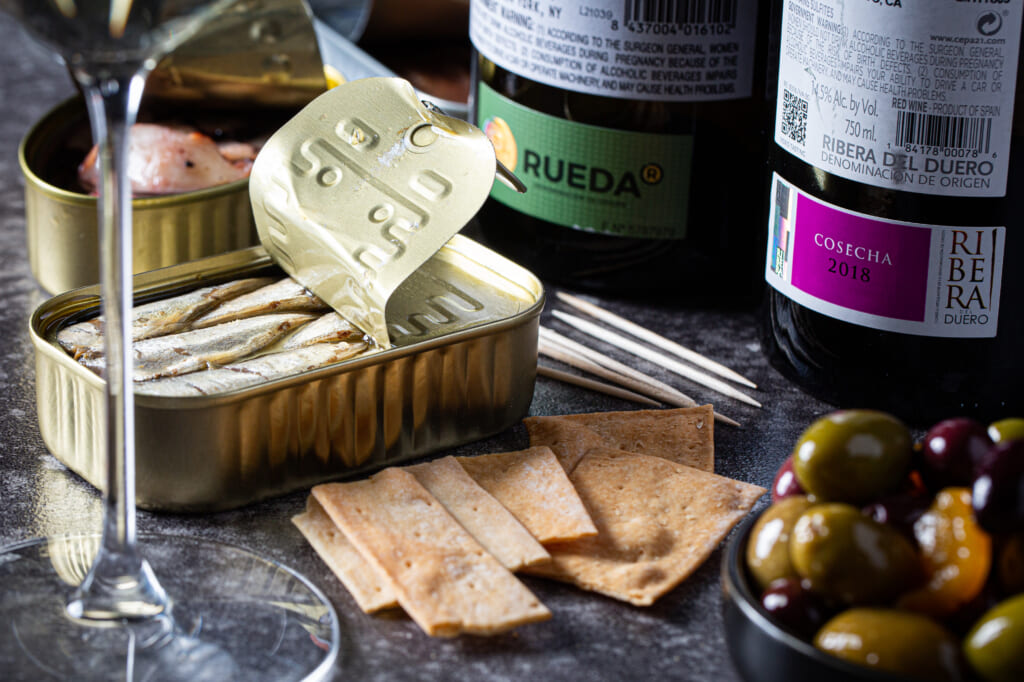
Another way to go with Verdejo is to serve it with grilled fish. Lap that with a buttery sauce and put a rustic loaf of herby bread on the table, and the pairing is complete – and memorable.
Or take Spanish conservas – tinned fish. This may not be the first thing you think of when you think of wine pairings, but categorically these will very likely be the best versions of fish in a can you’ll ever taste – particularly the tuna. Packed in buttery Spanish olive oil, the meaty tuna takes on a richness and just-right tuna taste that makes it impossible not to eat directly from the can. Besides, who’s looking?
The same is true with meaty olives. An acid driven wine like Verdejo will cut the richness of the olives and leave you wanting more — all the more reason to also grab Spanish picos – breadstick-like crackers (or breadsticks themselves if you’d like) – and paper-thin slices of Jamon Serrano, prosciutto, locally-made ham, and salami.
Because you may be sharing these very sharable provisions, the context is one of togetherness and connection – connection to wine, to region, and to one another. In the end, perfect food and wine pairings don’t get better than this.
The bottom line is that a Rueda Verdejo with bottle age and sophisticated winemaking techniques is a world-class wine that can go head to head with Sancerre, other Loire white wines, and Bordeaux Blanc, whether it’s on a wine shelf or on the table – or both.
Perfect Cheese Pairings With Verdejo And Tempranillo
Red, white, Spain — and blue too. That’s almost all you need to remember when it comes to pairing cheese with its perfect Spanish wine partners. The “almost” part is the fact the wines are not just any Spanish red and white wines. Instead, we’re talking Ribera Tempranillo and Rueda Verdejo. Both wines say cheese every time. Part of this has to do with the many styles of Verdejo and Tempranillo.
The 3 Styles Of Verdejo
Verdejo has three main styles – joven, lees-aged, and oak-aged. Understanding each is key to finding the perfect pairings.
Joven means young in Spanish and in the case of Verdejo, translates to approachable, light, bright patio-style wines with hints of grapefruit, lemon, and lime. Think pinot grigio and sauvignon blanc with a Spanish accent.
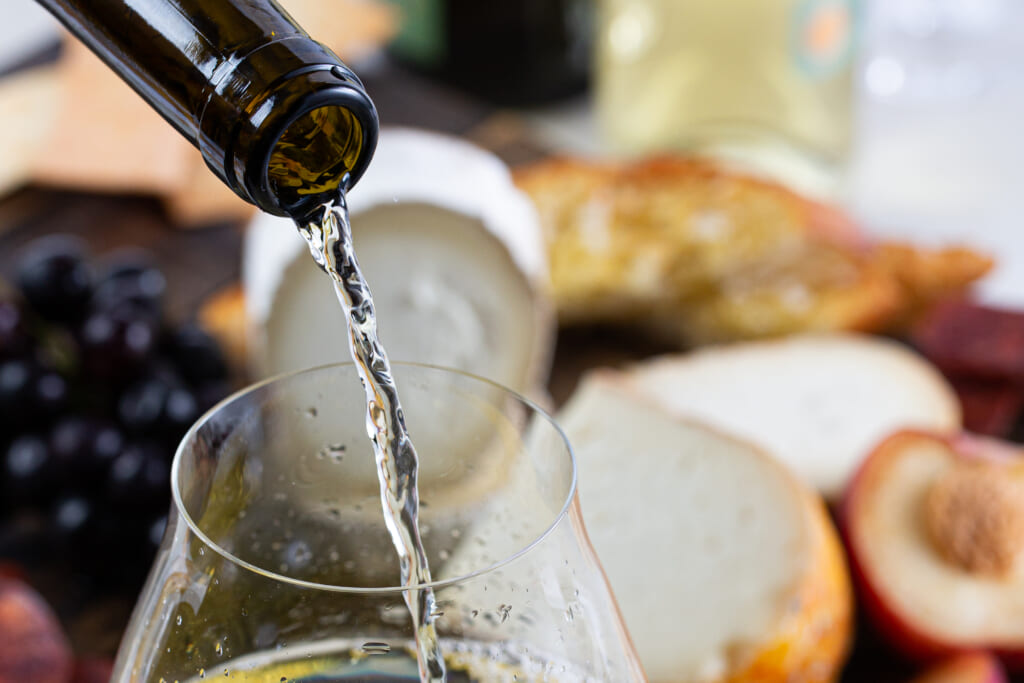
Lees-aged means the wine spends time on the spent yeast cells called lees. In turn, this takes the wine in a creamy direction giving it more body and textures. The acidity of the grape remains, and in concert with the rich mouthfeel, inches into Chablis-like territory.
Oak-aged is just that. The wines spend some amount of time in neutral or sometimes new oak barrels or casks, and while not oaky, the grape takes on a subtle weight on the palate, more developed textures, and creaminess that only oak can create. This oak aging is also a testament to the versatility of Verdejo. Very few white grapes can be released both young and aged — usually, it’s one or the other. Not Verdejo, which excels at all ages and stages.
In addition to being a super sippable wine, Verdejo sidles up to cheese like a cowboy to a saddle. It’s a natural pair. Whether from Spain or the United States, cheeses of all kinds find comradeship with the many styles of Verdejo.
Verdejo, Meet Goat Cheese
One of those is Humboldt Fog. Made by Cypress Grove in Arcata, California, this iconic American goat cheese is possibly the most wine-friendly cheese of any made in the world. It’s somewhat lemony but not too much. It’s earthy but not goaty. It’s creamy and mouth-filling, yet it’s light and bright. In other words, the characteristics of this cheese are the same as many of those you find in Verdejo.
The same is true for MitiCaña Caña de Cabra and Leonora, two of Spain’s excellent goat cheeses. Like Humboldt Fog, both cheeses fall in the soft-ripened cheese category, meaning that the cheese gets softer just under the white bloomy rind as it ages. These too have lemony flavors and creaminess on the palate. Because of their bright flavors yet lingering mouthfeel, this style of cheese takes to the joven and lees-aged styles of Verdejo particularly well.
Just to button up the Spanish goat cheese category, the relatively rare Monte Enebro finds harmony with all styles of Verdejo and – bonus – some Tempranillos too. Its earthiness and thin blue mold on the exterior ensure this. In other words, try both!
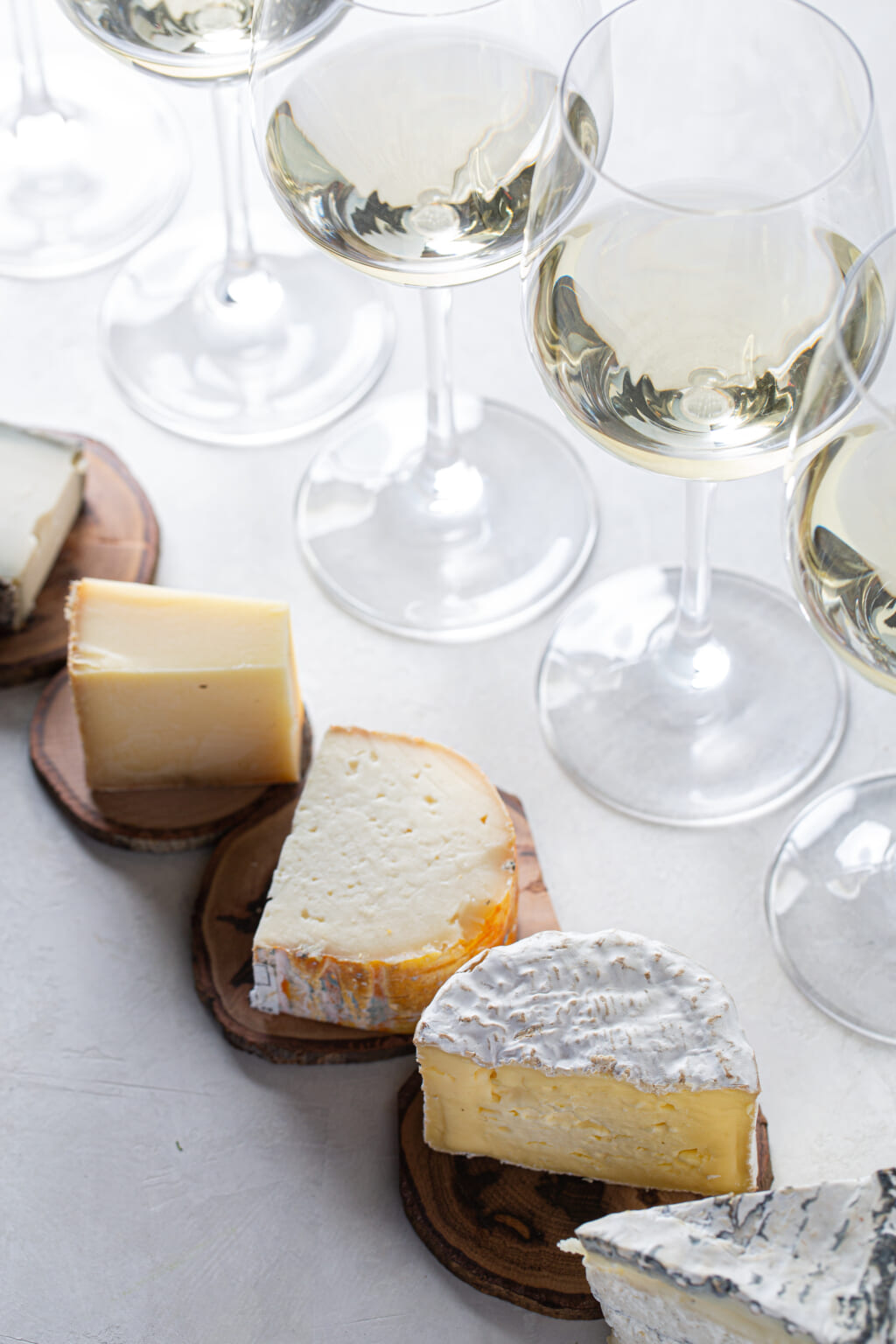
Cream And The Crop
Because of Verdejo’s flavor and textural range, goat cheeses aren’t its only cheese pals. Triple-creams take to Verdejo quite well too. Take Cowgirl Creamery’s Mt. Tam. A little firmer than most triple-cream cheeses, this cheese tastes like butter in cheese form with an ever-so-slight tang on the finish. It’s almost as if the cheese knows it’s so rich it had better tame itself by ending on a high note.
The best wines are the same – proper acidity to balance the richness and fruit.
In Verdejo-speak, a lees- and oak-aged version loves the butteriness in a cheese like Mt. Tam. It also has the proper acidity to balance the cheese’s richness. Call it anything you want — yin-yang, cream-to-my-coffee, salt-in-my-stew – but what’s clear is that a richer style Verdejo and a cheese like this one are, well, two peas in a pod.
Firmly In The Verdejo Camp
Soft, creamy, and buttery cheeses aren’t Verdejo’s only friends. The lees- and oak-aged versions also pair with 6-month aged Manchego (Spain’s unofficial national cheese) and Wisconsin’s Roth Cheese Grand Cru Reserve – a close cousin of Swiss Gruyére.
While Manchego is made with sheep’s milk and Grand Cru Reserve with cow’s milk, they both share a nuttiness and long finish. They’re also rich. Bring on the lees and oak-aged Verdejo, whose acidity will refresh the palate and whose medium-bodied texture will hold its own in the presence of the sturdy cheeses.
A Happy Marriage
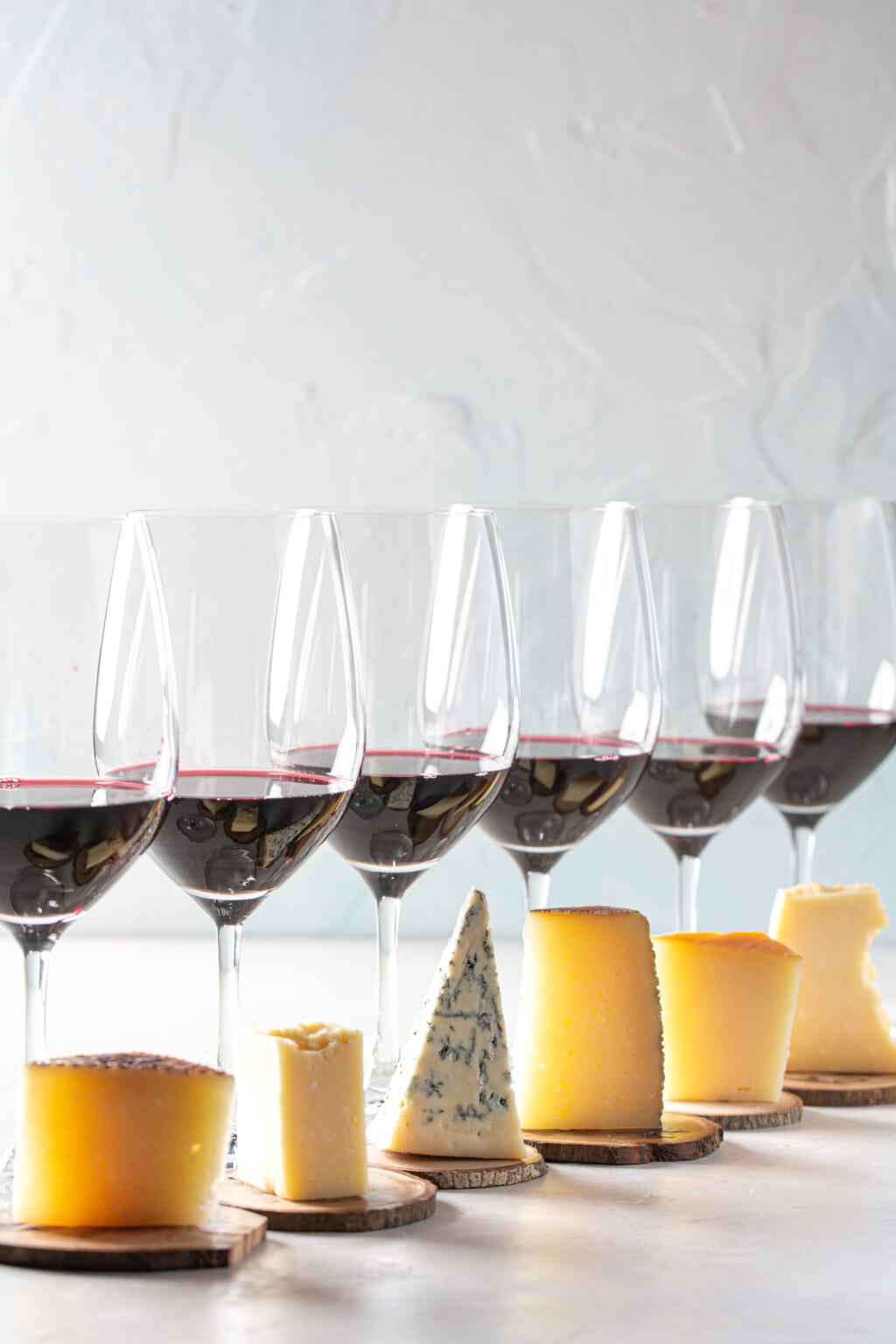
If white wine and cheese isn’t your thing, then Ribera del Duero Tempranillo and cheese will be. As we’ve learned by now, Tempranillo runs the flavor gamut from fruity and immediately approachable to complex, balanced tannins, acidity, herbaceousness, and dark fruits.
This range of flavors and medium- to full-bodied texture ensures there’s a cheese for pretty much every style and age of Ribera Tempranillo. Once you discover the wines, selecting its best cheese partners becomes a whole lot easier. Did we say fun?
Opposites Attract
Given the many styles of Tempranillo, it comes as no surprise that it has a lot of friends in cheeses. When it comes to one of the grape’s better cheese companions, look no further than Spanish Mahón Reserva.
Made in a part of Spain diagonally opposite from Ribera del Duero, this cow’s milk cheese hails from the scenic island of Menorca off the southwest coast of Spain. The cheese, distinctive because of its square shape with slightly rounded corners and bright orange pimentón-rubbed rind, is aged for about a year. In that time, it develops nutty, piquant, and even sweet flavors.
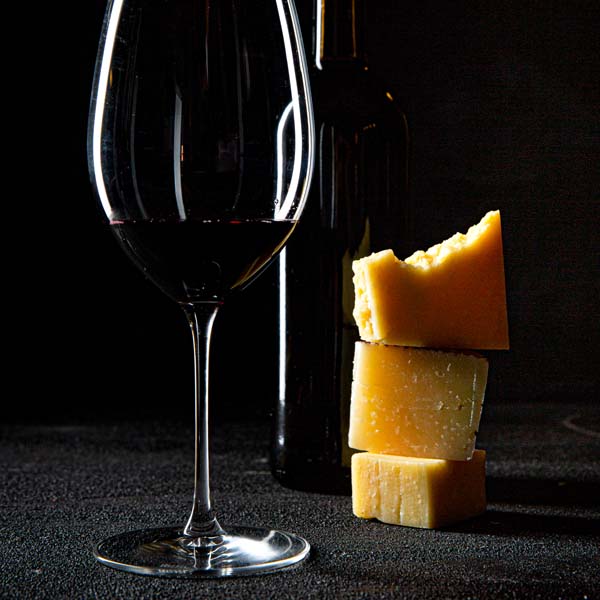
With cheese-age comes wisdom, and because of that, Mahón has enough personality to stand up to the earth and fruit in Tempranillo but not so much so that it dominates. The semi-hard texture of the cheese takes the pairing a step further by providing a textural contrast with the smooth, almost silky, body of the wine.
Also opposite, in this case flavor, not geography, is the matching of Tempranillo and blue cheese. This can be tricky because you don’t want too powerful a version of the wine – one that’s high on the oaky side or particularly acidic. In both cases, most blue cheeses will exaggerate those characteristics – ones that are essential to great wine but best when in balance.
But when you find the right blue – one that’s a little earthy, low on the pungent scale, has balanced salt, and a medium-creamy texture, well, that’s a whole other story.
For instance, Point Reyes Farmstead Cheese Company in Point Reyes, California, churns out the exceptional Bay Blue – a Stilton-like cheese that’s not only delicious on its own but also happens to go perfectly with a medium-bodied, fruit-forward Tempranillo. Its earthy, fudgy, toasted nut flavors, and sweet finish ensure this. Stronger, more pungent, and in some cases, gamy blue cheeses are best paired with dessert wines.
Counting Sheep
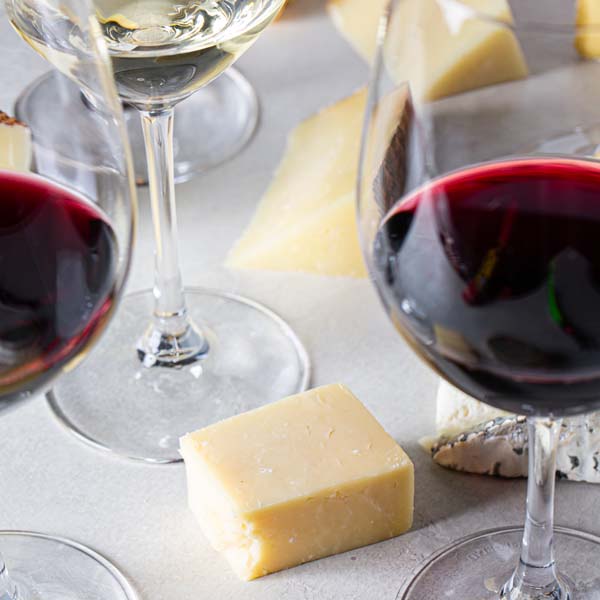
Maybe some of the most natural cheese pairings for Tempranillo are sheep’s milk cheeses. Like Tempranillo, most sheep’s milk cheeses have a pronounced tang primarily on the finish. In addition, they are often rich, have just-right salt, are a bit grainy (in a good way), and balanced.
Take Idiazabal. Hailing from the Basque country, this semi-hard sheep cheese with a hint of smokiness loves red wine, red fruit – basically anything called Tempranillo from the Ribera del Duero. It makes for a great after-dinner/before-dessert cheese course, but really – it’s good anytime, anywhere.
And then there’s Zamorano. Ribera del Duero and Rueda are part of Spain’s largest so-called autonomous region – Castilla y León. So too is Zamora, home of its namesake cheese. This raw sheep’s milk beauty is often compared to Manchego but it is made with the milk of different sheep breeds than Manchego. This is one of its main points of distinction. The result is a cheese with nutty, fruity, buttery, and sweet tones. It’s one of the most delicious, balanced sheep’s milk cheese made anywhere in the world, not just Spain.
Given Zamorano’s regional provenance, it should come as no surprise that Tempranillo is its natural wine partner. But it isn’t just that it follows the axiom, “What grows together, goes together.” It’s also that Tempranillo’s darker fruit and bright acidity are the perfect foil for the uber-rich, buttery, and tangy cheese. Think sweet-savory.
Cross Cultures
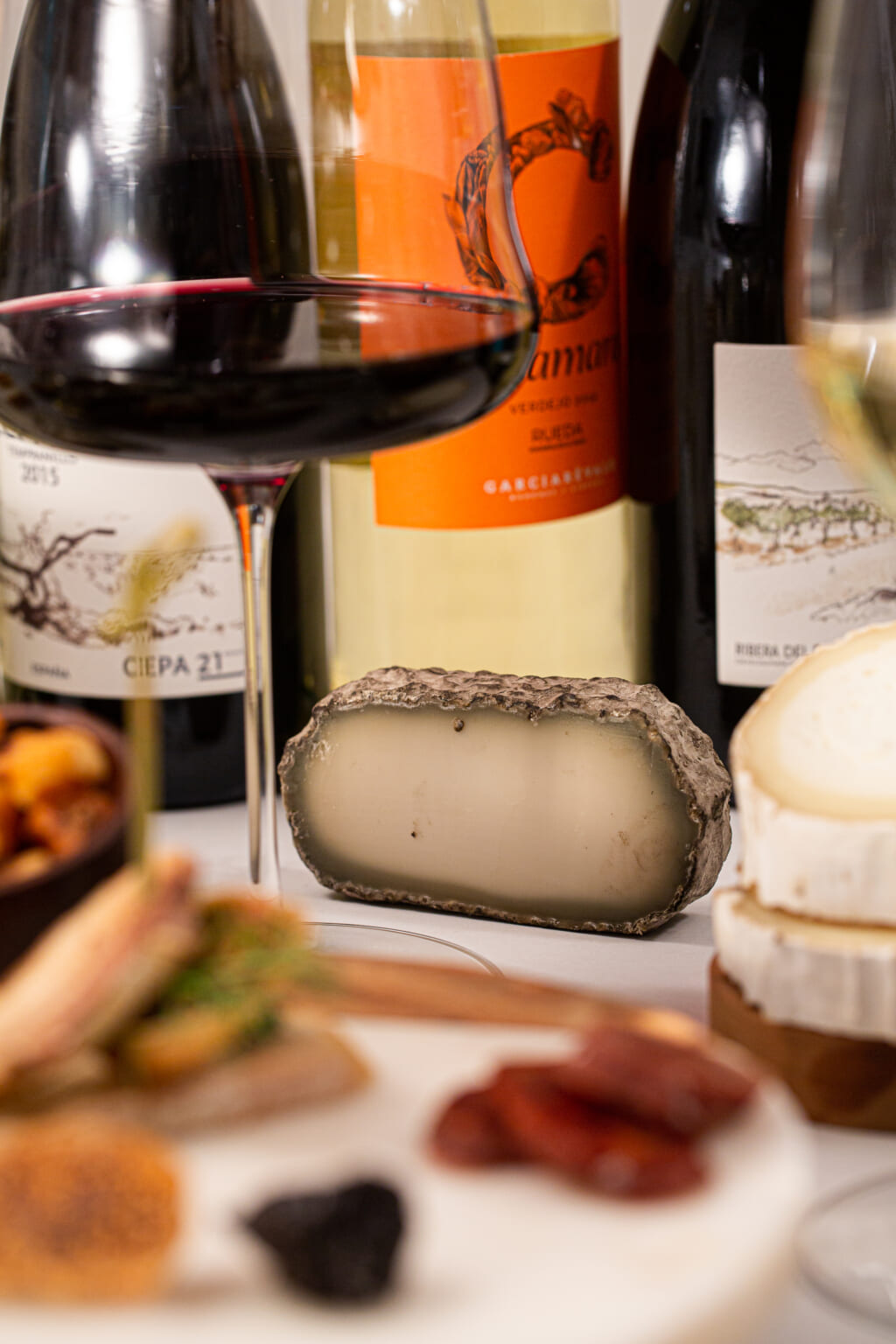
Tempranillo that’s grown along the banks of the Duero River is as natural as the cheddar that comes from Vermont. While that doesn’t necessarily mean the wine and cheese should go together, it so happens that in this case, they do. Really well, in fact.
In particular, the cheese called Cabot Clothbound, made by Cabot Creamery in Cabot, Vermont, and aged at the Cellars at Jasper Hill in Greensboro, Vermont, is the perfect mate for Tempranillo. The cheese’s earthy notes find the same element in the Tempranillo, particularly the Reserva and Gran Reserva classifications, and the sweet protein crystals in the cheese love the fruit in the wine.
The same could be said about Beecher’s Flagship cheese. Never mind the fact it’s made in New York and Seattle, not Vermont. The result is a cheese that’s often described as a cross between cheddar and Gruyére, which is kind of hard to imagine until you taste it.
The Gruyère-like flavors lend a sweet nuttiness to the 15-month aged cheese and the cheddar element is savory, slightly brothy, but also sweet. Enter Tempranillo – the Reserva and Gran Reserva. Just as with the Cabot Clothbound, their fuller-bodied, complex layers love the sweet-savory characteristics of the cheese.
Putting It All Together
If you didn’t guess this already, Ribera del Duero Tempranillo and Rueda Verdejo love cheese. Luckily, cheese loves them back. Here’s how you match them:
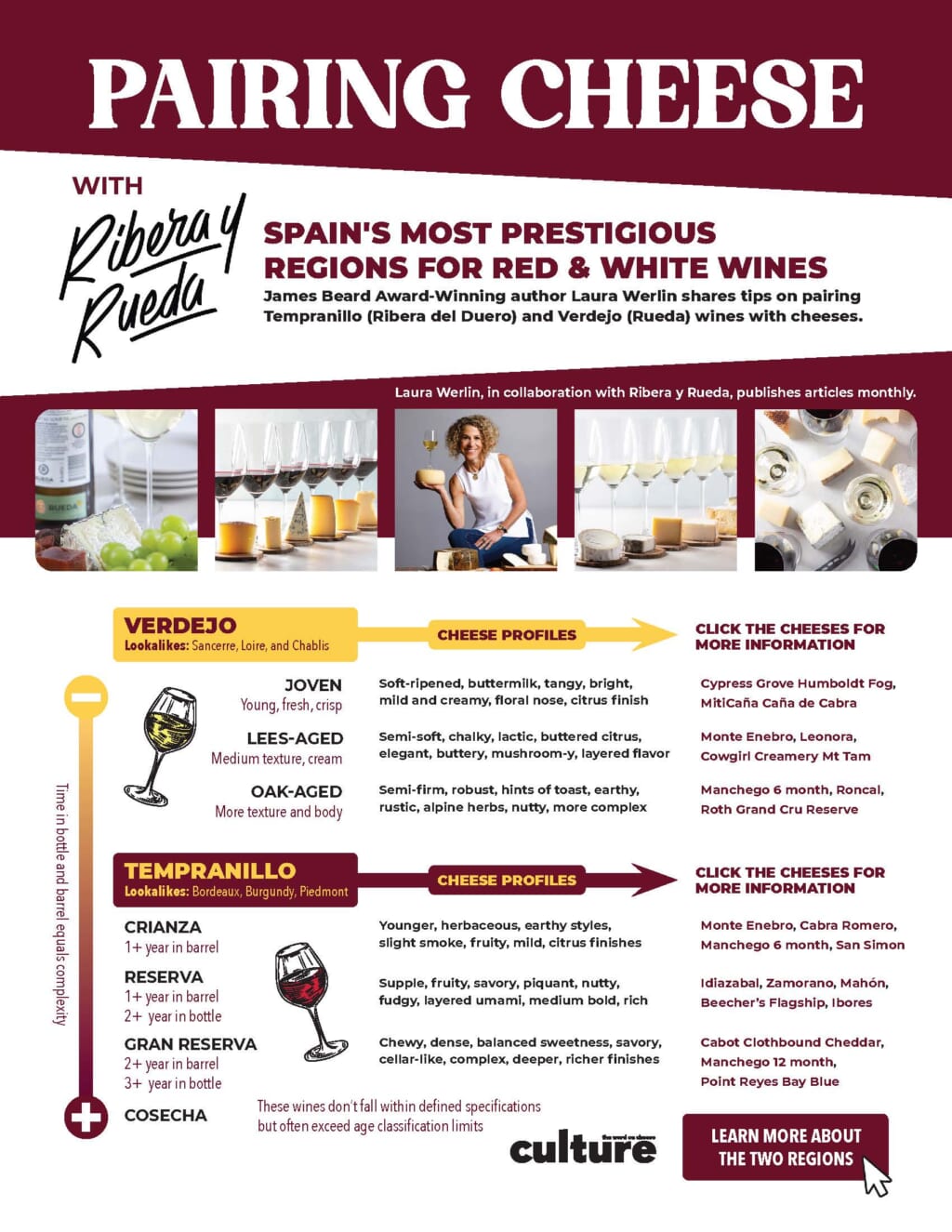
Learn more about Ribera y Rueda on Instagram @RiberayRuedaWine and don’t forget to enter for your free Trip to Spain. Be sure to sign up on Drink Real Spain (it’s free to join) for access to the best wine collections from Spain. Each month, Drink Real Spain hosts a virtual tasting featuring a curated four-bottle collection with wine celebrity Anthony Giglio exploring Verdejo from Rueda and Tempranillo from Ribera. Members of Drink Real Spain are also entered in for a chance to win amazing monthly giveaways.
Now is the time to become an insider at DrinkRealSpain.com and follow @RiberayRuedaWine – Spain’s most prestigious regions for red and white wines.
Enter to Win a Trip to Spain’s Most Prestigious Wine Regions.
Laura Werlin is a James Beard Award-winning author. Follow her on Instagram @cheezelady.
